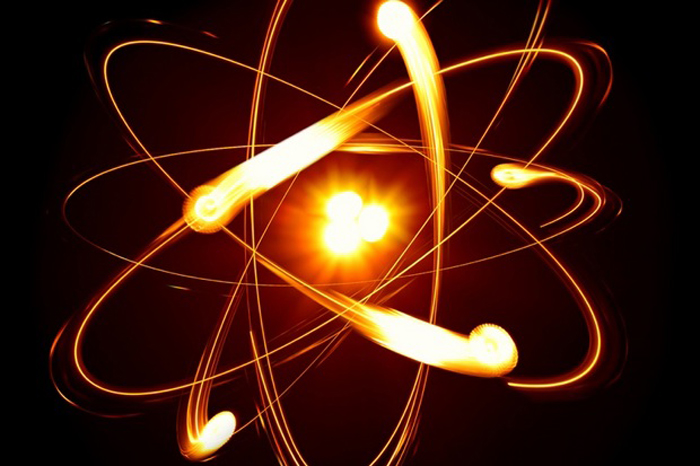Electrons' Split 'Personalities' Help Solve Physics Mystery

Electrons — the negatively charged particles around atoms — have split "personalities," and act one way or the other depending on how many of them are around, new research suggests.
The finding could help to solve a long-standing mystery about electrical currents in superconductors, which carry such current with no energy loss. Physicists have long wondered why electrons sometimes move freely as superconducting materials cool and other times jam up electrical flow.
The researchers focused on so-called high-temperature superconductors, or those materials that conduct electricity at temperatures above supercold, or absolute zero (minus 459.67 degrees Fahrenheit, or minus 273.15 degrees Celsius). They used an electron microscope to examine one class of high-temperature superconductors based on cuprates, orcopper and oxygen compounds. Cuprates are usually insulators (meaning they don't conduct electricity) but when cooled to about 160 degrees Kelvin (minus 171 degrees F, or minus 113 degrees C) and mixed with a oxygen, amounting to a few atoms scattered among several cuprate molecules, they turn into superconductors, the team from Brookhaven National Laboratory found. [Beyond Copper: 8 Chemical Elements You Never Heard Of]
Stuck electrons
The researchers found that doping the cuprates with oxygen initially caused some of the electrons to freeze in place — a condition called "stripes." The stripes interfered with the superconductivity, because the stuck electrons only allowed the free ones to move in certain directions.
Adding enough oxygen to the cuprates seemed to make a big difference, as the cuprates acted as semiconductors again, said study researcher J.C. Séamus Davis, a senior physicist at Brookhaven National Laboratory in Upton, New York, and director of the U.S. Department of Energy's Center for Emergent Superconductivity.
The reason this seems to work has to do with why superconductivity happens. Usually, metals conduct electricity because the atoms have incomplete outer electron shells. Copper, for instance, has a single electron in its outer shell, even though that shell has enough space for eight electrons. That extra space allows the electrons to act as though they are in a free-floating sea. Attaching a battery imposes an electric field on the electrons, which all get attracted toward the positive side of the field. The battery also supplies more electrons, which move like a conga line along the wire. There's resistance, though, because the electrons also bounce around randomly.
Sign up for the Live Science daily newsletter now
Get the world’s most fascinating discoveries delivered straight to your inbox.
If a metal is cooled enough, though, the electrons form so-called Cooper pairs. Electrons are negatively charged, so they attract the positively charged particles, or ions, in the metal, leaving a slightly denser positive charge as they move. That positive charge attracts other free electrons, resulting in a weakly bound pair — one behind the other.
Quantum-mechanical rules allow them to sail through the copper without interference. But it doesn't work when the temperature is too high, because the pairs break up when the electrons are jostled around. [Wacky Physics: The Coolest Little Particles in Nature]
A process called doping — in which chemicals are applied to a metal or other substance — adds "holes," or spaces of positive charge where electrons are absent, to the material. The result is that the electrons in the cuprates have more room to move, and that's why, at cold temperatures, the stuck electrons — or "stripes" — disappear.
Making superconductors
While the phenomenon may sound esoteric, it's an important step in understanding how to make superconducting materials, Davis said. "There were dozens of competing explanations. The result of our experiment showed it was a simple explanation," Davis said.
There is still a lot of work to do on raising superconductor temperatures. The Brookhaven team's experiment was done at 4 degrees Kelvin, or about minus 450 degrees F (minus 268 degrees C) — well below the theoretical limit. More experiments will have to be done with doped cuprates at higher temperatures. That said, Davis notes that if a superconductor could work at the temperature of liquid nitrogen, as opposed to liquid helium, that would reduce the costs a lot.
Also, knowing that "stripes" need to be prevented from forming can guide engineers and scientists in choosing what substances to focus on and how to boost the temperature of superconductors even further. "Once the materials scientists know what the objective is, they can work toward that," Davis said.
Even with this new finding, superconductors still hold mysteries. Although Davis' group has found a way to mitigate the striping phenomenon, much of the underlying mechanism is still unclear.
Yang He, a doctoral candidate at Harvard University, is among a group of scientists who also study superconductivity. He said in their findings, a phase where electrons are partially conducting and partially insulating — called the pseudogap — seems to evolve smoothly no matter what the electrons in the material are doing. In addition, the pseudogap phase electrons seem to participate in superconductivity as well. "Somehow, the electrons are doing two things," he said.
The study appears in the May 9 issue of the journal Science.
Follow us @livescience, Facebook & Google+. Original article on Live Science.











